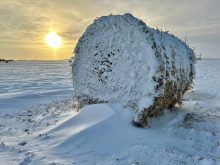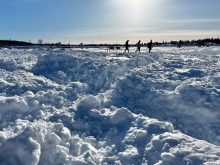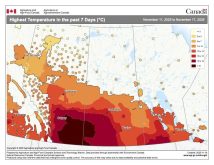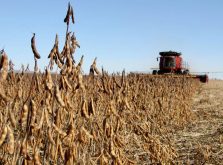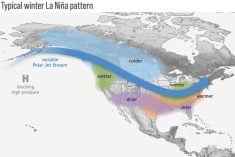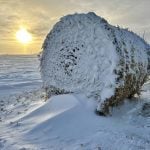I’ve been collecting winter weather folklore from readers and finding more by digging through the internet. Now I’ll list each of them, give a brief explanation of what it means, and see if there is any scientific evidence to back it up.
If I missed your submission, or if you suddenly remember one, email me at [email protected].
The first one is probably the most recognized weather saying, and while I think it is more appropriate or realistic in the summer, I have included it for old times’ sake.
Read Also
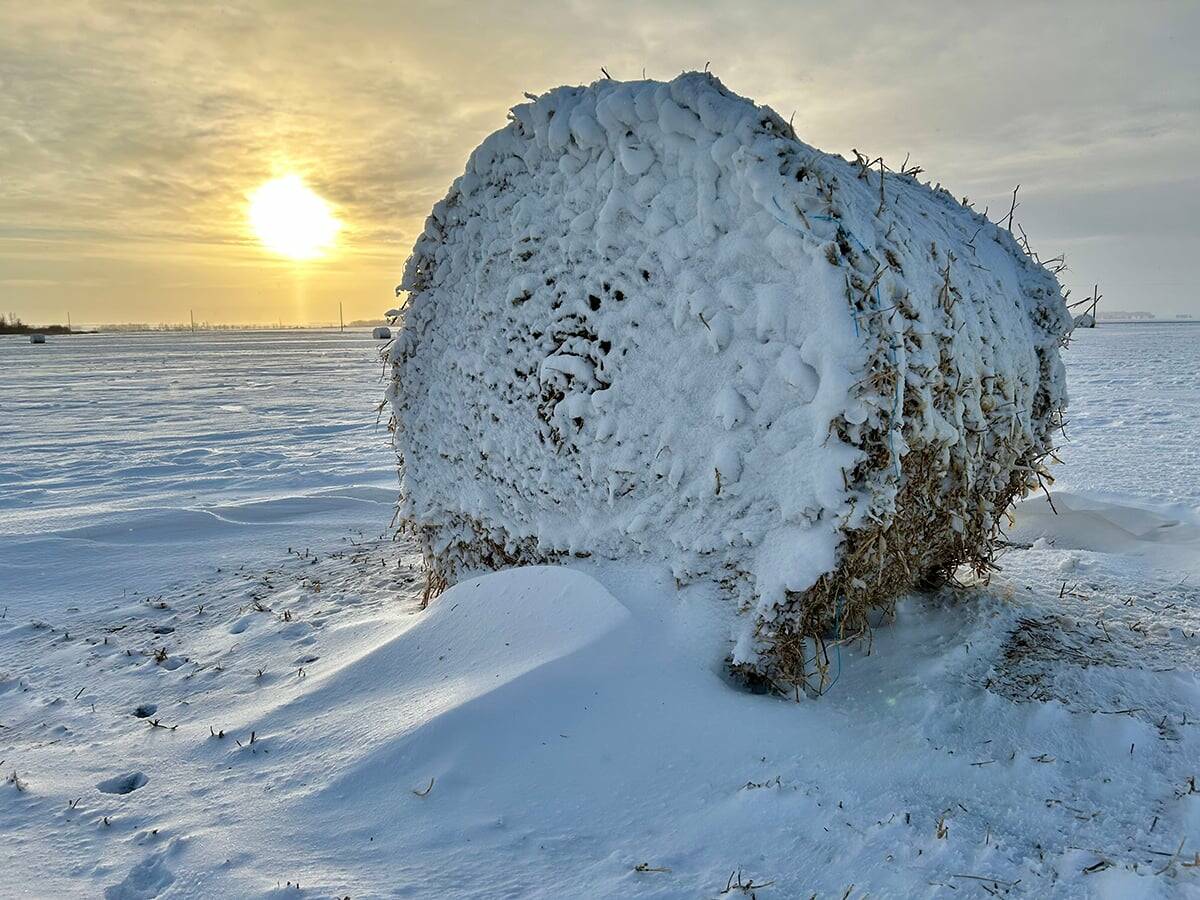
What is perfect Christmas weather?
What is ‘perfect’ Christmas weather on the Prairies? Here’s where you should head this holiday, according to historical weather data.
1. Red sky at night, sailor’s delight. Red sky in morning, sailor’s warning.
This suggests a red sky at sunset means fair weather, while a red sky in the morning signals bad weather ahead. A red sky occurs when sunlight passes through a greater amount of atmosphere due to the angle of the sun – sunrise and sunset — so to see it you need a clear or partly clear sky.
Since our weather typically moves from west to east, a red sky in morning suggests a high-pressure system is moving out and a low-pressure system is moving in. In the evening, the opposite is true, indicating clear skies and fair weather.
2. Heavy and numerous fogs in August mean heavy snows in winter.
This one or a variation is a common bit of weather folklore. While some people truly believe it, I am skeptical. Heavy fogs in August would result from abundant low-level moisture, usually supplied by wet ground, along with clear, cool or cold nights.
Those nights would mean we are in a weather pattern dominated by arctic high pressure, which in the winter would mean cold temperatures. Whether a pattern present in August would continue or develop in winter it tough to say. And fog is often a very local event, whereas heavy snows are more widespread.
3. If the trees drop their leaves early, winter will be harsh.
A related version relates to heavy crops of fruit, thick husks on corn or lots of acorns that presage a tough winter. This one does not need any deciphering. Deciduous trees begin to shed their leaves when they prepare for winter dormancy. This early leaf drop can sometimes be a response to early-season cold snaps or drought conditions.
However, there’s no clear scientific consensus that the timing of leaf drop directly correlates with winter severity and I have not been able to find any study on this topic. The growth of acorns is more likely determined by current weather and by weather in the previous year.
Also, a lot of trees that produce fruits or seeds tend to have bumper crop years that are followed by one to several years of small crops. Scientists believe that acorn crops cycle between small and large not because of weather, but as an evolutionary response to ensure their reproductive survival. So, I can’t see how this could predict a harsh winter.
4. A full moon means cold weather is on the way.
It is often said that the appearance of a full moon signals cold temperatures in winter. There is some truth to this because clear nights in winter often allow for rapid cooling of the surface due to lack of cloud cover. This cooling may bring colder temperatures, but a full moon itself doesn’t cause the cold. It’s simply a result of clear skies, which allow heat to radiate away.
5. If animals are active in the fall, it will be a mild winter.
Again, this does not need deciphering. Some animals, such as squirrels and deer, may appear more active in the fall as they prepare for winter, storing food or growing thicker coats. Often this is linked to mild temperatures that allow for an extended growing season, giving animals a chance to do more foraging and for humans to observe it. Animal behavior is more likely influenced by the availability of food rather than an indicator of winter severity.
6. A ring around the moon means snow is coming soon.
You sometimes see a ring or halo around the moon and it means that snow will arrive within a day or two. A ring or halo is caused by ice crystals in the upper atmosphere. These crystals are often found in cirro-stratus clouds, which can indicate an incoming storm or precipitation, including snow. So, this folklore holds some scientific weight, because a halo suggests moisture is present at high altitudes and weather systems may soon move into the area.
7. When the northern lights are active, cold weather will follow.
I have heard this one frequently and it still seems popular. The aurora borealis occurs when charged particles from the sun interact with the Earth’s magnetic field. To see them, you need clear skies and darkness. We see them more often in winter because our longer nights give us more opportunity to see them. If it is clear and we can see the aurora, there is a good chance we have high pressure in place, usually arctic, which means cold temperatures.
8. If the winter starts with a mild November, December will be severe.
I had not heard this one before and I sure hope it is not true, since we have had a mild November up to now. Even the forecasted colder weather over the last week of the month is not looking that bad. This folklore might be tied to the common weather idea that, over time, temperatures and precipitation will average out.
If you had a period of above-average temperatures, at some point colder-than-average will move in. Once upon a time this was mostly true, but lately we are seeing fewer colder temperatures to average out the warm temperatures.
I still have a few more sayings to go, along with some interesting Indigenous pieces of winter weather folklore, so, I will come back to this topic in December.




